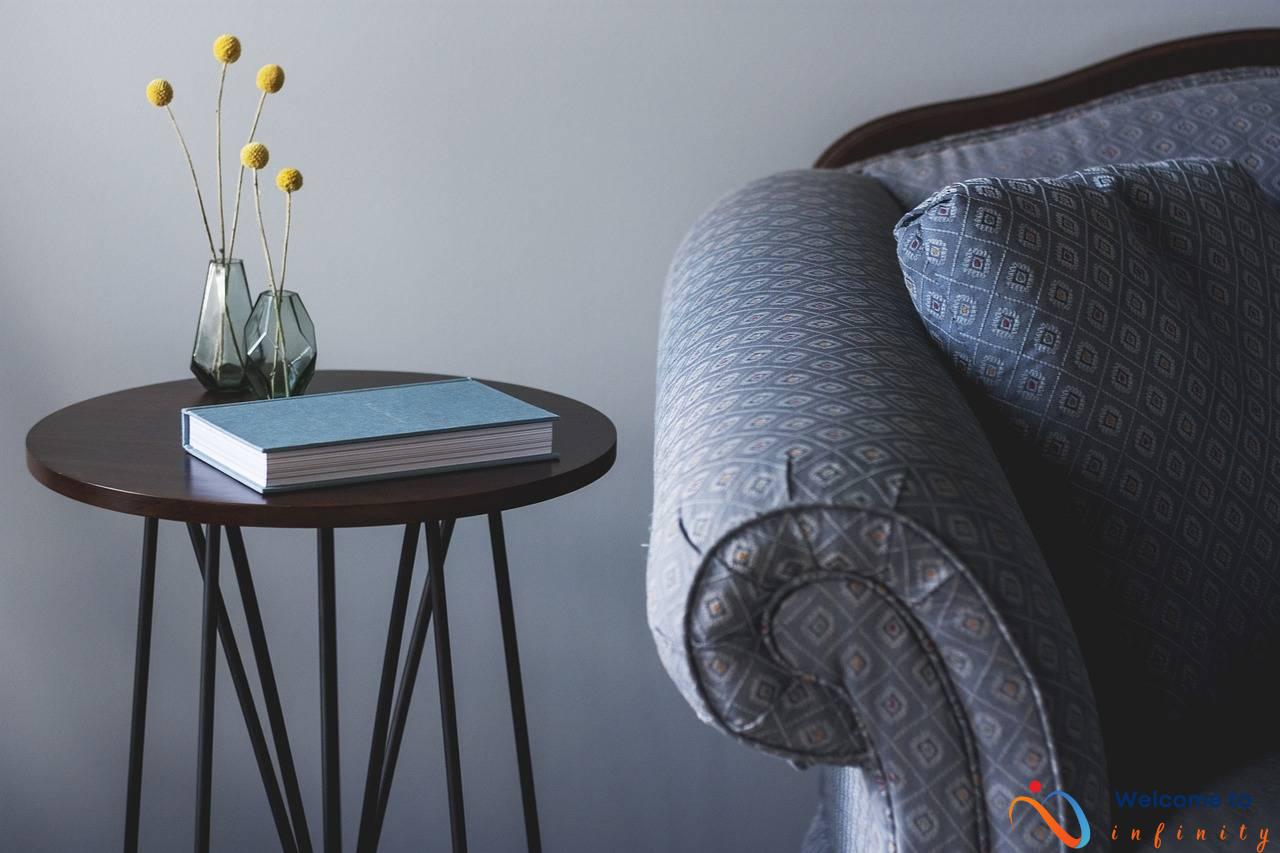A wedding is a special occasion where the couple celebrates their love with family and friends. However, food and beverage etiquette can be a tricky and stressful part of planning a wedding. To avoid any mishaps, it's important to have a plan in place and execute it with grace and style. Here are some tips to help you handle food and drink at your wedding.
When selecting a wedding menu, there are many factors to consider. Firstly, consider your guests' tastes and dietary restrictions. You don't want anyone feeling left out or hungry. It's also important to have a variety of options available, including vegetarian and gluten-free options. If you can afford it, consider offering a tasting menu to give guests a variety of options to try.
Alcohol is a common staple at weddings, but it can also be a source of tension and conflict. It's important to follow etiquette rules when serving alcohol at a wedding to ensure everyone stays safe. One of the biggest decisions to make is whether to offer an open bar or a cash bar.
There are pros and cons to both open bar and cash bar options. An open bar can show your guests that you are generous and appreciative of their attendance, but it can also be expensive. A cash bar can save you money, but it may be seen as tacky or inhospitable. Ultimately, the decision depends on your budget and priorities.
If an open bar or cash bar doesn't suit your needs, there are alternative options to explore. For example, consider having a signature cocktail or a self-serve drink station. These options can be more cost-effective and can add some personal touches to your wedding.
It's important to ensure that there are enough non-alcoholic options available for guests who don't drink or can't have alcohol. This includes things like water, juice, and soda. Make sure these options are clearly labeled and easy to access.
Choosing the perfect wine to complement your wedding menu can be a daunting task. It's important to take into account the flavors of the food and the preferences of your guests. Consider having a wine tasting session to help you choose the perfect wines for your wedding.
By having a plan in place and following these tips, you can handle food and drink at your wedding with grace and style. Remember, the goal is to create a memorable and enjoyable experience for you and your guests.
Choosing the Menu
One of the most important aspects of planning a wedding is choosing the perfect menu for your guests. It's essential to select a menu that caters to everyone's individual tastes and dietary restrictions. Here are some tips to help you choose the ideal wedding menu:
- Start by considering your guests' dietary restrictions – this includes allergies, intolerances, and other food preferences.
- Talk to your caterer about options for accommodating different dietary requirements.
- Consider the time of day for your reception; a morning or afternoon reception may include a brunch or lunch menu.
- Think about your wedding theme and match your menu accordingly. For example, if you're having a beach wedding, seafood and light, refreshing options may be more suitable.
- Choose classic dishes with a modern twist, as this will appeal to a variety of tastes and be more memorable for your guests.
- Offer a variety of dishes, including vegetarian, meat and fish options, to cater to everyone's tastes.
Remember, it's important to work closely with your caterer to create a menu that is both delicious and suitable for your guests. Consider doing a tasting beforehand to ensure everything is just right.
Serving Alcohol
Serving alcohol at a wedding is a common practice, but doing it with proper etiquette is a must. To ensure everyone stays safe throughout the event, follow these rules:
- Offer a variety of alcoholic and non-alcoholic drinks. This will ensure guests who don't drink or cannot drink have something to indulge in too.
- Limit the consumption of alcohol. Overconsumption can lead to recklessness and ruin the mood of the event. Remember, it's better to be safe than sorry.
- Hire a professional bartender to handle the serving of alcohol. They are trained to detect overconsumption and prevent it from happening.
- Serve food with the drinks. The presence of food can help slow down the absorption of alcohol. Plus, an empty stomach can lead to quicker inebriation.
- Ensure there are transportation options available for guests who have consumed too much alcohol. Consider offering shuttle services or providing the contact information of local taxi companies.
Moreover, it's essential to decide whether to offer guests an open bar or a cash bar. Both options have pros and cons, and the decision should be based on your budget and the type of guests attending. Offering an open bar can add a touch of luxury but can be costly. On the other hand, a cash bar can help control the consumption of alcohol and also save money. However, keep in mind that some guests may not appreciate a cash bar. Hence, it's wise to discuss this with your partner and weigh the pros and cons before making the final decision.
In conclusion, serving alcohol at a wedding requires proper etiquette and safety measures. Keep the rules mentioned above in mind to ensure everyone enjoys the event and stays safe. And don't forget, moderation is the key!
Open Bar vs. Cash Bar
One of the major decisions you'll need to make when planning your wedding is whether to have an open bar or a cash bar. Both options have their pros and cons, so it's important to consider your budget, guest list, and personal preferences before making a final decision.
With an open bar, your guests can enjoy unlimited drinks at no extra cost to them. This option is often seen as more luxurious and generous, and can be a great way to keep the party going all night long. However, it can also be quite expensive, especially if you have a large number of guests or if your guests tend to drink a lot. You'll also need to make sure you have enough staff to handle the increased demand for drinks, and it can be difficult to monitor how much each guest is consuming.
A cash bar, on the other hand, requires guests to pay for their own drinks. This option can be more affordable for you as the host, as you'll only need to cover the cost of setup and staffing. It also ensures that guests are more responsible for their own consumption, which can be a good thing if you're worried about underage or excessive drinking. However, it can come across as cheap or tacky to some guests, and can be seen as an inconvenience if they're not prepared to pay for their own drinks.
Ultimately, the decision to have an open or cash bar comes down to your personal preferences, budget, and guest list. If you have a lot of heavy drinkers on your guest list and can afford to pay for an open bar, it might be worth it to keep the party going. On the other hand, if you're trying to stick to a tight budget or have guests who would be put off by a cash bar, it might be better to go that route. Another option is to offer a limited selection of free drinks, such as beer and wine, while allowing guests to pay for any other drinks they might want. This can strike a balance between generosity and affordability, and make everyone happy.
Alternative Options
If an open bar is not in your budget or if you're looking for unique ways to serve drinks at your wedding, consider some of these creative alternatives:
- Signature Cocktails: Create one or two signature cocktails that represent you and your partner's personalities or your wedding theme. Not only will it save money on stocking a full bar, but it's also a fun way to add a personal touch to your wedding.
- Wine and Beer Only: Rather than offering a full bar with liquor, consider offering a selection of wine and beer. This will still give guests options to choose from, but it can be more affordable and limit alcohol-related incidents.
- Beverage Stations: Set up different beverage stations throughout the reception area, such as a lemonade stand, iced tea station, or hot cocoa station (if it's a winter wedding). This can add some variety and keep guests hydrated without having to purchase a lot of alcohol.
- Bottled Beverages: Rather than having a staffed bar, consider having pre-bottled and labeled alcoholic drinks, such as wine, beer, and margaritas. This can save on bartending fees and keep things organized.
Remember that alcohol is not the only way to celebrate at weddings, and there are plenty of non-alcoholic options that you can explore. You could have a hot cocoa bar, a coffee station or a bubble tea stand. Get creative with an ice cream cart or even offer unique types of soda or water as a refreshing alternative. The key is to ensure that your guests have a variety of options available to them.
Non-Alcoholic Beverages
If you have guests attending your wedding who don't drink, or can't have alcohol due to health or religious reasons, it's important to ensure that there are enough non-alcoholic beverage options available. Here are some tips on how to do so:
- Offer a range of options: It's not enough to just have water and soda available. Consider providing a variety of non-alcoholic beverages, such as sparkling water, iced tea, lemonade, or fruit juice.
- Label them clearly: Make sure that the non-alcoholic beverages are clearly labeled so that guests know what they are and don't accidentally take a drink with alcohol in it.
- Choose interesting options: Just because a drink is non-alcoholic doesn't mean it has to be boring. Consider offering fun and creative mocktails or non-alcoholic cocktails that guests will enjoy.
- Provide enough: Make sure that you have enough non-alcoholic beverages to cater to all guests who may want them. This includes estimating how many guests won't be drinking alcohol and ensuring that there are enough options available for them.
By providing enough non-alcoholic beverage options, you can ensure that all guests feel included and comfortable at your wedding.
Wine Selection
When it comes to choosing the perfect wine for your wedding, it's essential to consider the type of menu you'll be serving. Whether it's a seafood feast or a barbecue banquet, your wine selection should complement the flavors of the food.
To impress your guests, consider serving a variety of wines throughout the reception. A light white wine is perfect for cocktails and appetizers, while a heavier red wine pairs well with the main course. For dessert, consider serving a sweet dessert wine.
If you're unsure about which wines to choose, consult a wine expert or sommelier. They can guide you in selecting the perfect wines to complement your menu, taking into account your budget and the preferences of your guests.
To help guests navigate the wine selection, you may want to consider providing tasting notes on each table or creating a wine list. A wine list can also be a beautiful addition to your wedding décor, and guests will appreciate the opportunity to choose their favorite wines.
Remember to purchase enough wine for the entire event, taking into account how much each guest is likely to drink. A general rule of thumb is to plan for a half bottle of wine per person.
By choosing the perfect wines to complement your wedding menu, you'll impress your guests and create a truly memorable event.
Seating Arrangements
Seating arrangements can be one of the more challenging aspects of planning a wedding. It's important to consider guests' personalities, interests, and any specific needs they may have. The first thing to keep in mind is that your guests will want to be seated with people they know and are comfortable with. Start by grouping guests together based on their relationship to the wedding party, such as friends, family, and coworkers. Consider creating a seating chart or using place cards to guide guests to their assigned tables.
When it comes to accommodating guests with specific requirements, it's important to be mindful and make necessary arrangements. For instance, guests with disabilities or mobility issues should be seated close to the entrance or near restrooms. If you have guests who are hearing or visually impaired, inform the catering staff to ensure that they receive extra attention. Moreover, if a guest has a special dietary requirement, make sure to place them at a table where their needs can be easily accommodated.
It's essential to remember that weddings can be emotionally charged events, and seating feuding guests together can cause stress and tension. The same goes for guests who have gone through a recent breakup or those that just don't get along. Consider setting up separate tables for such guests or keeping them as far apart as possible. If you have guests who are single, consider setting up a separate table for them to mingle, or seat them together based on common interests.
In summary, seating arrangements can be a challenging aspect of wedding planning, but with careful consideration, it's possible to create a seating plan that makes everyone feel comfortable and at ease. By considering guests' relationships, specific needs, and personalities, you'll be able to create a seating chart that minimizes stress and maximizes fun.
Head Table Etiquette
Seating the wedding party, parents and other VIPs at the head table requires careful consideration and planning. It is important to create a seating arrangement that is comfortable for everyone and avoids any awkwardness or hurt feelings.
In general, the head table should be situated in a prominent location in the room so that all guests have a good view. The newlyweds should be seated in the center of the table facing the guests, with the maid of honor to the groom's left and the best man to the bride's right. Parents and other VIPs should be seated according to their relationships with the couple.
If there are divorced or remarried parents, it is important to be sensitive to their needs and create a seating plan that minimizes any potential discomfort. In such cases, some couples opt to have multiple head tables so that everyone can be seated comfortably with those they feel most comfortable with.
Another important aspect of head table etiquette is deciding who to include. The general rule of thumb is to include only those who played a significant role in the wedding planning process or who are particularly close to the couple. Anyone who is not included at the head table should still be seated at a table in a prominent location in the room.
If there are last-minute changes or issues with seating at the head table, it is important to handle them with tact and diplomacy. Try to anticipate any potential issues ahead of time and devise a contingency plan in case of emergencies. When addressing any potential problems, be gracious and understanding, and work to create a solution that is satisfactory for everyone.
Ultimately, the goal of head table etiquette is to create a comfortable and enjoyable atmosphere for everyone while giving special recognition to those who played a significant role in the couple's lives.
Escort Card vs. Place Card
When it comes to seating arrangements, there are two common options to let your guests know where they will be sitting: escort cards and place cards. The main difference between the two is where they are displayed, and it's important to choose the right option for your wedding.
Escort cards are typically placed at a separate table or display near the entrance of the reception area. Guests will find their name and the table number they have been assigned to and will then proceed to their table. This option is great for weddings with a larger guest list as guests can easily find their seat without disrupting other guests.
On the other hand, place cards are typically displayed at the individual tables themselves. Each guest will have their assigned seat clearly marked with their name, making it easier for guests to know exactly where to sit. This option is ideal for smaller weddings where guests may already know each other and seating arrangements can be more intimate.
Ultimately, the decision between escort cards and place cards comes down to personal preference and the style of your wedding. If you're unsure which option to choose, consider factors like the size of your guest list, the layout of your reception area, and the formality of your wedding.
No matter which option you choose, make sure that the cards are easy to read and match the overall theme and aesthetic of your wedding. You can also consider adding some personal touches to the cards, like handwritten calligraphy or themed design elements.
In addition to escort cards or place cards, you can also consider other seating arrangements like assigning tables or letting guests choose their own seat. Whatever you decide, make sure that your guests feel comfortable and welcome as they enjoy your special day.
Buffet vs. Plated
When it comes to choosing the right type of meal service for your wedding, there are two main options to consider: buffet style or plated meal service. Both options have their pros and cons, and it ultimately comes down to personal preference and budget.
Buffet style offers guests more variety and the option to choose exactly what they want to eat, which can be especially important for guests with dietary restrictions. It also allows for more mingling and interaction among guests as they move around the food stations. However, buffet-style meals can sometimes be chaotic and cause long lines and wait times, which can be frustrating for guests.
On the other hand, plated meal service is more formal and elegant, with each guest being served at their table. This option ensures that everyone is served at the same time and can also be accommodating to guests with special dietary needs. However, plated meals can be more expensive, as it requires more staff and equipment to serve each guest individually.
To make sure either option runs smoothly, there are a few tips to consider. For buffet-style meals, it's important to organize the stations to minimize congestion and keep the lines moving smoothly. It's also a good idea to have plenty of serving utensils and staff on hand to keep the food stations stocked and clean. For plated meals, make sure to provide the caterer with detailed seating charts and dietary restrictions to ensure that each guest is served the appropriate meal and has a smooth dining experience.
Whichever option you choose, it's important to consider the needs and preferences of your guests while also staying within your budget.
Buffet Etiquette
Buffet meals are a popular choice for weddings as they offer a wide variety of food options for guests. However, if not organized properly, it can lead to chaos and long waiting lines. Here are some tips on how to handle a buffet service with grace:
- Set up multiple serving stations to avoid long lines. This will also help to prevent overcrowding and ensure a smooth flow of guests.
- Label each dish with the name of the food and any dietary restrictions, such as vegetarian or gluten-free.
- Place cutlery and napkins at the end of the buffet table to avoid guests juggling their plates while trying to grab utensils.
- Assign servers to help guests with disabilities or elderly guests who may need assistance carrying their plates to their tables.
- Ensure there is enough food for everyone and that dishes are replenished regularly.
Make sure to communicate with your catering team about your expectations for the buffet service, including the number of guests and dietary restrictions. By being prepared and organized, you can ensure a pleasant dining experience for all your wedding guests.
Plated Meal Etiquette
When planning a wedding with a plated meal, it's important to understand the proper etiquette for serving and clearing plates. The goal is to ensure that every guest is served a meal that meets their dietary requirements and that their empty plates are cleared efficiently.
First, make sure that the catering staff is well-informed of any dietary restrictions or food allergies among your guests. This will prevent any potential health issues and ensure that everyone can enjoy their meal without worry. It's also important to offer vegetarian and vegan options for guests who follow those diets.
When it comes to serving the plated meal, make sure the catering staff knows the order of service. Generally, meals are served to women first, then men, and the couple at the head table is served last. The plates should be served to the guests from the left-hand side, and the plates should be cleared from the right-hand side. This ensures that the staff won't be reaching across guests, and guests won't have to move their arms to allow for plate removal.
Efficient plate clearing is also important for making sure everyone is happy. As the plates are cleared, any remaining food should be scraped into a waste bin, and guests should never be asked if they're finished eating. Additionally, make sure the staff knows when to clear plates and when to leave them be. For example, if a guest has left their fork on their plate, this indicates that they are not yet finished with their meal.
Lastly, be conscious of the timing of the meal. Generally, it's best to serve meals once all guests have been seated to prevent any delays. However, it's important to make sure that guests who are running late are still served a hot and fresh meal. This can be accomplished by keeping meals in a hot box or warming oven until they're ready to be served.
By following proper plated meal etiquette, you can ensure that every guest has an enjoyable dining experience at your wedding.











